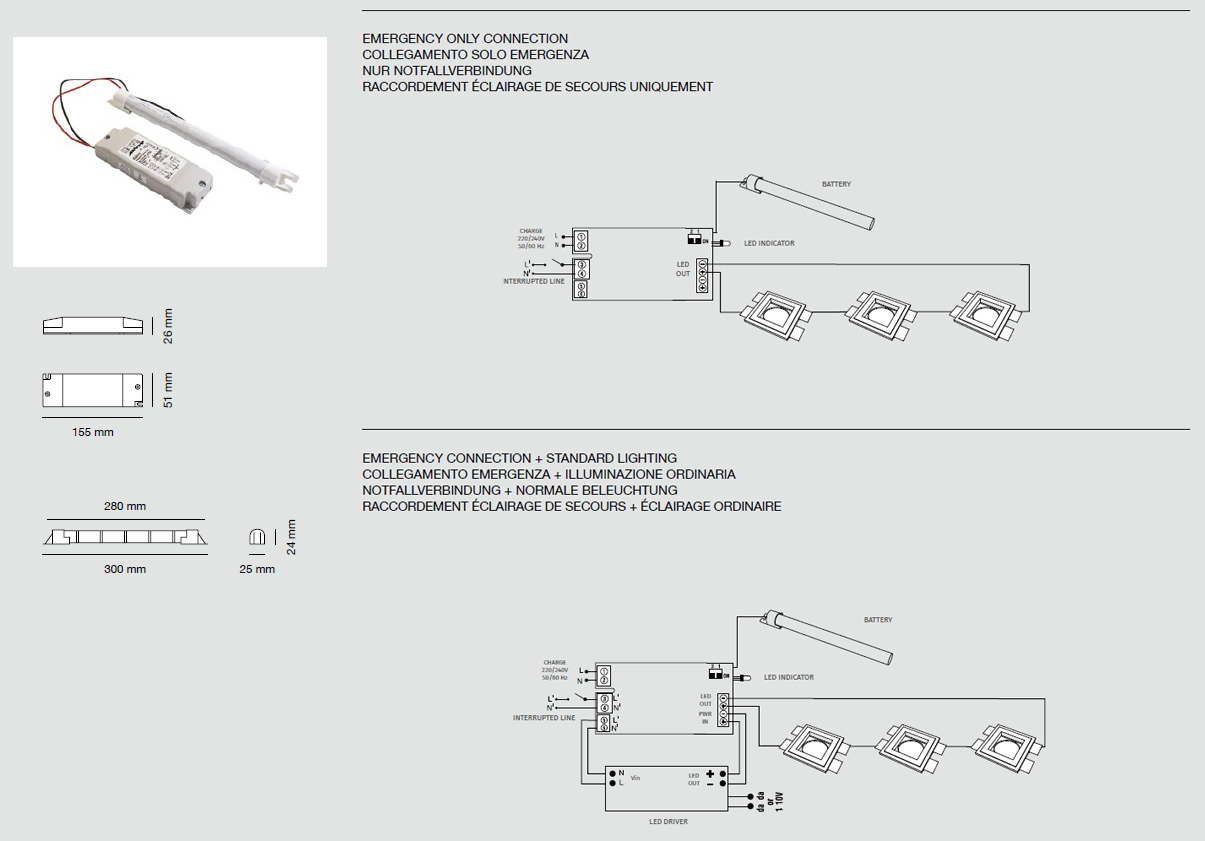Electrical connections
- 01What is the Emergency Kit (Item 099.142)?
- 02How do I choose the correct driver?
- 03What is the difference between LED and GU10 Ø35/Ø50/Ø111, R7s 78mm/118mm, G9 and E27?
- 04I have several LEDs to connect to a single driver. How should they be connected?
- 05Can I put the driver inside the product or the housing box?
- 06What does dimmable mean? How can I make my lights dimmable?
- 07What is the difference between TRIAC (Phase Cut), 1-10V, 0-10V, DALI, PUSH and CASAMBI?
These terms are different dimming control systems, with each requiring a driver compatible with the system chosen in order to function correctly.
- Both the DALI and DALI2 are digital interfaces that requires the use of a control unit that produces a signal inserted into the specific DALI input of the driver. DALI2 drivers are generally compatible with DALI control units, while DALI drivers are usually not compatible with DALI2 control units
- PUSH is a dimming system that uses one or more buttons. By keeping them pressed, you can increase or reduce the light intensity, whilst a simple touch turns the light on or off. For this system, it is necessary to connect to the specific PUSH input of the driver to the phase interrupted by a normally open button and, if necessary, the uninterrupted neutral to the driver-specific PUSH N input. For multiple drivers controlled by a single button and desynchronised, it is possible to use a simple synchronisation procedure that involves pressing the button until the lights come on at 100% of the light intensity, after approximately 30 seconds.
- 1-10V and 0-10V are analogue signals currently generated mainly by control units, requiring the connection of the specific 0-10V or 1-10V input to the output of the control unit.
- TRIAC (Phase cut) is a dimming system that requires a control unit to interlude between the phase and the neutral, reaching the TRIAC-compatible driver, then sending the phase and the neutral at the output of the control unit to the driver. TRIAC 9010 items are mainly compatible with Trailing Edge Dimmers (Ascending Phase).
- CASAMBI is a digital interface in which the CASAMBI compatible driver connects directly to a device via Bluetooth.
- 08How far can I put the LEDs from the driver? What is the maximum length that a LED strip can be with a single power supply at its head?
